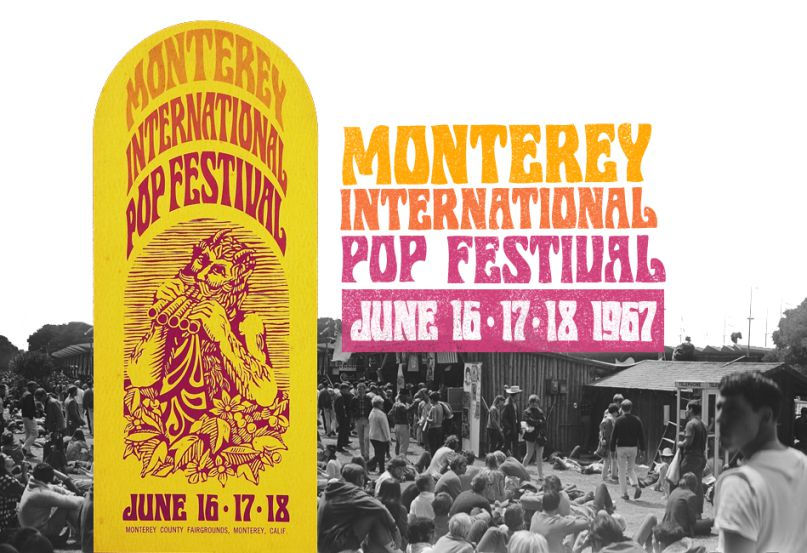Monterey Pop Festival
- Classic Rock A -Z

- Jun 16, 2018
- 3 min read

In 1967, the city was the venue of the three day Monterey Pop Festival. All the proceeds went to charity when all the artists (over 30 appeared), agreed to perform free, and the “Summer of Love” was born. Monterey became the template for future music festivals, notably the Woodstock Festival two years later.
"Be happy, be free, wear flowers, bring bells," read the advertisements which summoned the young people of California to a three-day party. The flower children, the wacky clothes, the ready availability of sex and drugs - it is hard to think it all took place 40 years ago.
The festival is remembered for the first major American appearances by Jimi Hendrix (who at this time had become a star in the UK but not yet in his native U.S.), and The Who, as well as the first major public performances of Janis Joplin (Columbia Records signed Big Brother and The Holding Company on the basis of their performance at Monterey). It was also the first major performance by Otis Redding in front of a predominantly white audience, who performed a sensational set, recorded for posterity in the film of the event, Monterey Pop.
The festival was planned in seven weeks by promoter Lou Adler, John Phillips of The Mamas & the Papas, producer Alan Pariser, and publicist Derek Taylor. The festival board included Mick Jagger, Paul McCartney and Brian Wilson.

Monterey was the concert that propelled The Who into the American mainstream. At the end of their frenetic performance of "My Generation", the audience was stunned as guitarist Pete Townshend began smashing his guitar, amid smoke bombs and explosions. Frightened roadies rushed onstage to scurry expensive microphones to safety.
Rolling Stone Brian Jones who was seen milling around with his German girlfriend, Nico, introduced Jimi Hendrix to the crowd. Few people even knew who he was when he arrived on stage in a ruffled orange shirt and crotch-strangling red trousers. The guitarist played a blinding set which ended with an unpredictable version of "Wild Thing", which he capped by kneeling over his guitar, pouring lighter fluid over it, setting it aflame, and then smashing it.
Other major acts who appeared included: The Byrds, Grateful Dead, Simon and Garfunkel, The Steve Miller Band, Canned Heat, The Mamas And The Papas, Jefferson Airplane, Moby Grape, Quicksilver Messenger Service, Booker T. & the M.G.s, Buffalo Springfield and The Electric Flag. Tickets cost $3.50–6.50 (£2–3.80) for the three days.
John Phillips, of The Mamas and The Papas, as one of the organizers, got it together enough to write ‘If You’re Going To San Francisco’ (Be Sure To Wear Flowers In Your Hair) specifically to promote the festival, the song becoming a hit for Scott McKenzie. The song 'Monterey', by Eric Burdon and the Animals, (who played on the first day of the festival) was written about their experience, and mentions several other bands/individuals who were there. It was released in November, 1967 (five months later.)

The Monterey Pop Festival embodied the themes of San Francisco as a focal point for the counterculture and is generally regarded as one of the beginnings of the "Summer of Love" featuring bands that would shape the history of rock and affect popular culture from that day forward.
An estimated 200,000 attended over the three days. I wish I’d been one of them, but I was only 9 at the time! When I was in Monterey I did imagine how the city would’ve looked during that long weekend in 1967, the reverberating music of Hendrix, Canned Heat and Buffalo Springfield drifting over the crowds.
Within 24 hours of the festival emptying, the local mayor drafted a resolution outlawing any gathering of more than 2,000 people on the field where the Summer of Love had flowered. I wonder if those who live there now, (there is a golf course on the spot and the hillside is covered with million-dollar condominiums), know the story of what happened at the birth of The Summer of Love.
Reprint permissions courtesy of Neil Cossar (ThisDayInMusic.com)






















Comments